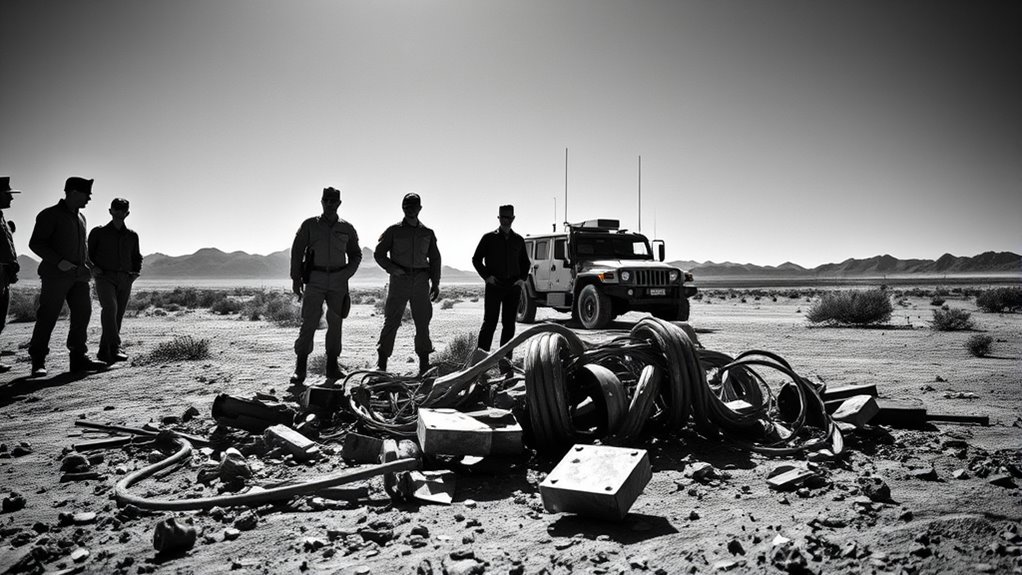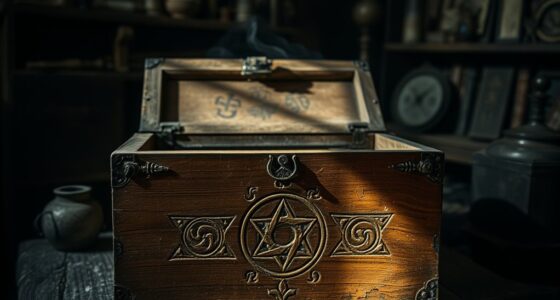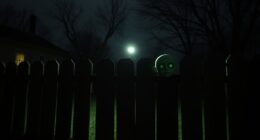The Roswell Incident in 1947 raised eyebrows when rancher W.W. Brazel discovered unusual debris. Initially, it seemed like a bizarre find, but the military called it a “flying disc.” Later, they claimed it was just a weather balloon, confusing many. Speculation around extraterrestrial origins gained traction, fueled by secrecy and contradictory statements. The debate continues, with some insisting on an alien cover-up. Curious about the full story? There’s more to uncover about what really happened.
Key Takeaways
- W.W. Brazel discovered unusual debris in 1947, initially comprising rubber strips, tinfoil, and sticks, raising questions about its origin.
- The military’s initial announcement of a “flying disc” created public excitement, but soon shifted to a weather balloon explanation.
- Major Jesse Marcel’s accounts described metallic foil and balsa wood, which fueled speculation about extraterrestrial origins.
- Many theories persist regarding alien involvement, largely due to military secrecy and the lack of concrete evidence.
- The incident has become a cultural phenomenon, inspiring numerous books, films, and an annual UFO festival in Roswell.
The Discovery of Unusual Debris

In mid-June 1947, a local rancher named W.W. Brazel stumbled upon unusual debris on his ranch near Roswell, New Mexico.
After a recent storm, he found rubber strips, tinfoil, paper, tape, and sticks scattered across a large area, indicating a possible crash.
Initially, Brazel didn’t think much of it until he heard media reports about flying saucers.
Curiosity piqued, he returned with his family to collect more debris and eventually contacted the sheriff, who involved a local Air Force base.
The lack of metal parts and the lightweight materials led to skepticism about the object’s nature, setting the stage for future speculation and intrigue surrounding the incident.
Military Response and Initial Reports

On July 8, 1947, the military made its first public statement about the Roswell incident, declaring the recovery of a “flying disc.”
On July 8, 1947, the military publicly announced the recovery of a “flying disc” related to the Roswell incident.
This announcement came after Sheriff George Wilcox alerted the Roswell Army Air Field (RAAF) about the unusual debris found by rancher W.W. Brazel.
Major Jesse Marcel and Captain Sheridan Cavitt were dispatched to collect the material, while Colonel William Blanchard informed higher authorities.
The press release by Walter Haut sparked immense public interest, overwhelming local radio lines and attracting global media attention.
However, contradictory statements soon emerged, suggesting the debris was from a weather balloon project, causing confusion and skepticism among the public regarding the true nature of the incident.
Theories Surrounding the Incident

While many accept the official explanations surrounding the Roswell incident, a plethora of theories has emerged over the years, enthralling the public’s imagination.
Some believe that the unusual debris described by Major Jesse Marcel hints at extraterrestrial origins, especially given the media’s influence in popularizing the term “flying saucer.” The infamous alien autopsy video, though later debunked, added fuel to the fire.
Others speculate that the military’s secrecy and shifting narratives during the Cold War suggest a cover-up linked to Project Mogul.
Despite multiple investigations concluding the incident involved a weather balloon, many still find the lack of concrete evidence intriguing, leading to ongoing fascination and speculation about what really happened in Roswell.
Key Figures and Witness Accounts

Although the Roswell incident generated a whirlwind of speculation, the accounts of key figures involved remain vital in piecing together what happened.
Major Jesse Marcel, the head intelligence officer, described recovering unusual debris that included metallic foil and balsa wood.
Walter Haut, the public information officer, issued the initial press release claiming a “flying disk” was recovered, later affirming the existence of two crash sites in his affidavit.
Colonel William Blanchard played a significant role in the initial response, while authors Charles Berlitz and William L. Moore challenged the government’s weather balloon explanation.
Skeptics like Roger Launius question extraterrestrial claims, highlighting the complexity and contradictions surrounding the incident.
These accounts shape public discourse and keep the mystery alive.
Lasting Impact on Culture and Conspiracy Theories

The Roswell incident has left an indelible mark on both culture and conspiracy theories, sparking ongoing debate and intrigue. It’s become a cornerstone of Roswell’s economy, with an annual UFO festival that attracts thousands.
Movies, TV shows, and books have woven this narrative into American pop culture, while the International UFO Museum draws curious tourists. Despite official explanations linking the event to Project Mogul, many still believe in a government cover-up, fueling conspiracy theories.
This incident not only represents a cultural fascination with extraterrestrial life but also symbolizes societal distrust. Music therapy has been shown to enhance emotional well-being, paralleling the way communities find solace in exploring the mysteries of the universe. Roswell stands as a benchmark for UFO folklore, shaping community beliefs and keeping the mystery alive in contemporary discussions about the unknown.
Frequently Asked Questions
What Evidence Supports the Extraterrestrial Theory of the Roswell Incident?
You might find various claims supporting the extraterrestrial theory intriguing, like eyewitness accounts of unusual debris and the military’s ambiguous statements.
Some argue that the initial recovery of a “flying disc” sparked speculation about alien involvement. Additionally, the infamous false autopsy film in 1995 fueled public imagination.
Conspiracy theories often cite government cover-ups, claiming that the lack of transparency hints at hidden extraterrestrial evidence.
However, these remain largely speculative without concrete proof.
How Did the Public React to the Military’s Weather Balloon Explanation?
When the military claimed a weather balloon was behind the strange debris, you might’ve raised an eyebrow, wondering if they were pulling your leg.
Initially, many accepted the explanation, but skepticism soon bubbled up like a pot about to boil.
News reports focused on military statements, yet contradictions sparked doubt.
As time passed, you and others began to see the story as more than just a weather balloon—an enigma wrapped in mystery.
Were There Any Official Investigations Following the Incident?
Yes, there were official investigations following the incident.
You’d find that the U.S. government conducted multiple inquiries, especially in the 1990s, to address public curiosity and pressure.
Reports, including those from the Air Force, concluded the debris was from a Project Mogul balloon.
They aimed to clarify the circumstances and dispel theories about extraterrestrial involvement.
Despite their findings, interest and speculation about the event continued to thrive.
What Role Did Media Play in Shaping Public Perception of Roswell?
Media played an essential role in shaping your perception of the Roswell incident. Sensational headlines captured your imagination, sparking widespread interest and speculation.
As you read reports, the media’s portrayal fueled a sense of mystery, leading to ongoing debates about what really happened. Even after official denials, the media kept the story alive, encouraging conspiracy theories and skepticism about government explanations.
This relentless coverage ultimately cemented Roswell’s place in popular culture and your collective consciousness.
Are There Any Recent Developments or New Findings Related to Roswell?
You won’t believe it—75 years later, and the Roswell mystery still ignites your imagination!
New findings? Well, not really. Despite ongoing research and witness accounts claiming extraterrestrial connections, no groundbreaking evidence has emerged to shake the weather balloon explanation.
Yet, your fascination endures, fueled by conspiracy theories and the allure of the unknown.
It seems your curiosity about the skies won’t ever fade, keeping this legendary incident alive in popular culture and your mind!
Conclusion
In the end, you’re left with questions that linger like shadows in the night. Whether you believe it was aliens or weather balloons, the mystery captivates your imagination. The stories of witnesses echo through time, sparking debates that never seem to fade. The impact on culture is undeniable, as conspiracy theories flourish and intrigue grows. So, as you ponder the Roswell incident, remember: it’s not just about what happened, but what it continues to inspire.









